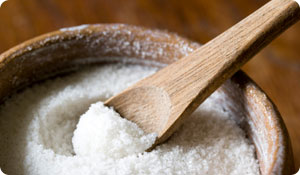
Salt plays numerous roles. Among other things, it helps balance electrolyte levels and transmits nerve impulses. Unfortunately, a majority of Americans take in too much salt, ingesting an average of 3,500 milligrams each day-1,200 milligrams above the maximum recommended daily intake. When the amount of sodium in your body is more than your kidneys can handle, it increases your blood volume, which requires your heart to work harder and raises the pressure in your arteries. So if you're suffering from heart disease, you need to limit the quantity of salt in your diet to at most 1,500 milligrams a day; therefore you should educate yourself on foods that are high in the ubiquitous compound. Here are a few foods that are surprising sources of sodium either because of the shocking amount they contain or due to the fact that you'd never suspect them.
Onion soup mix: It's hardly unexpected that a dry soup mix would have a lot of salt, but 3,132 milligrams seems a bit immoderate. Though soup is notoriously high in sodium, not all soup mixes are made the same: At 610 milligrams of sodium, Lipton's onion soup mix has about a fifth that of generic brands.
Dairy products: Cheese is not the only salty dairy product. A cup of milk and a six-ounce serving of yogurt both impart about 130 milligrams of sodium. While that's considered a moderate amount of sodium, consuming several dairy products over the course of a day can lead to an overtally of sodium rather quickly.
Baking powder and baking soda: A half teaspoon of baking powder contains 240 milligrams of sodium, while a half teaspoon of baking soda has 600 milligrams. Since these ingredients are essential to many baked goods, they up the sodium content of foods that you wouldn't expect to have too much of the salty stuff. They also serve as an important reminder to read food labels carefully: The nutritional info panels on these products give breakdowns for an eighth of a teaspoon when many recipes call for at least double that amount.





